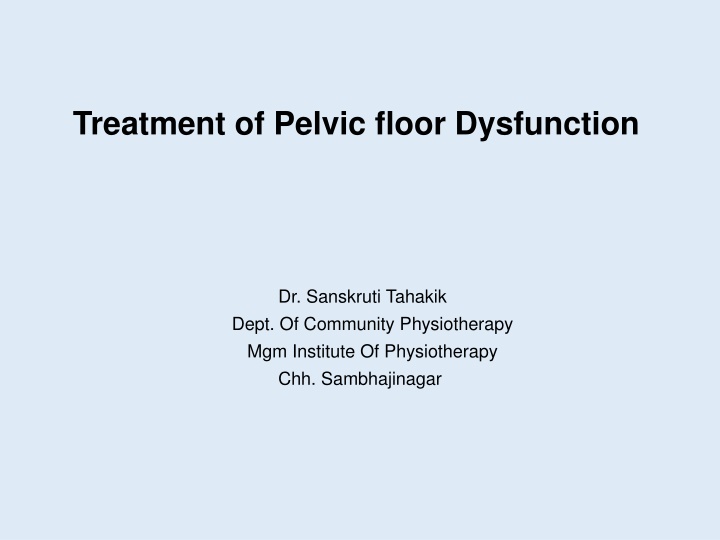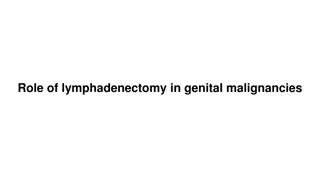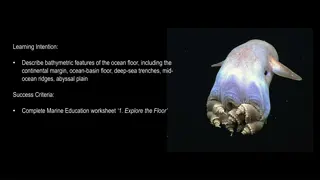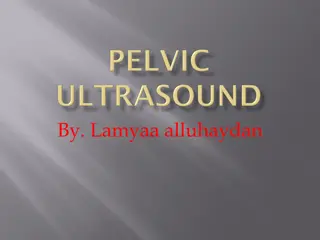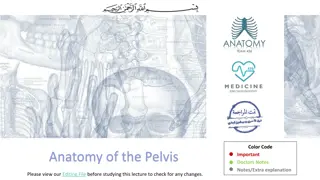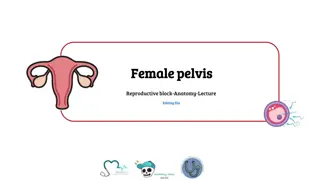Treatment of Pelvic Floor Dysfunction Overview
Pelvic floor dysfunction involves issues with muscles, ligaments, and nerves supporting pelvic organs, leading to conditions like uterine prolapse. Understand the anatomy, roles of physical therapists, re-education techniques, and recent advances in treatment.
Download Presentation

Please find below an Image/Link to download the presentation.
The content on the website is provided AS IS for your information and personal use only. It may not be sold, licensed, or shared on other websites without obtaining consent from the author.If you encounter any issues during the download, it is possible that the publisher has removed the file from their server.
You are allowed to download the files provided on this website for personal or commercial use, subject to the condition that they are used lawfully. All files are the property of their respective owners.
The content on the website is provided AS IS for your information and personal use only. It may not be sold, licensed, or shared on other websites without obtaining consent from the author.
E N D
Presentation Transcript
Treatment of Pelvic floor Dysfunction Dr. Sanskruti Tahakik Dept. Of Community Physiotherapy Mgm Institute Of Physiotherapy Chh. Sambhajinagar
Contents Introduction Anatomy Role of the physical therapist in pelvic floor dysfunction Techniques of pelvic floor muscle re-education Recent advances
Objective Overview anatomy of pelvic floor Dysfunction and treatment Recent advances
Introduction The pelvic floor consists of layers of muscle that provide a hammock or sling from the pubic bone at the front to the coccyx at the back. Its function is to support the pelvic organs the bladder and rectum, helping to keep these structures in the correct position.
This network of muscles (e.g., levator ani muscles), fascia (e.g., urogenital diaphragm, endopelvic fascia including the pubocervical and rectovaginal), nerves, and ligaments (e.g., uterosacral and cardinal ligaments) provides support on which the pelvic organs rest.
Levator ani muscles Pubococcygeus Pubovaginalis Puborectalis Iliococcygeus
Function: The pelvic muscles play key role in supporting the bladder. These muscles must not only be able to contract voluntarily (and rapidly at times) but also maintain a continuous resting tone.
Uterine Prolapse The condition refers to the bulging of or herniation of one or more pelvic organs into or out of the vagina. Pelvic organ prolapse occur when the muscles, ligaments & fascia that holds these organs in their correct positions becomes weakened.
Risk factors for the development of prolapse Possible Risk Factor Confirmed Risk Factor Intrapartum variables (long second stage of labour , Older age. episiotomy, epidural analgesia) Increased body mass index. Increased abdominal pressure. Higher parity Vaginal delivery. Menopause. Constipation.
The method of grading most commonly used in the UK was proposed by Laycock & Chiarelli It is a six-point modelled on the Oxford scale. P power which is more correctly the strength of the PFM determined E endurance i.e. the time in seconds that a maximum voluntary contraction (MVC) can be held before fatigue. R repetitions i.e. the number of MVCs which can be performed (up to 10) interspersed with rests of 4 seconds F fast i.e. the number of 1-second contractions (up to 10) performed, ECT i.e. every contraction timed )
Management Conservative modalities begin with exercises to strengthen the pelvic floor musculature (Kegel exercises). Mechanical support devices (pessaries) may be used to manage prolapse and the associated symptoms, or The defect may be repaired surgically.
Integrated Care For Older People (ICOPE) guidelines on community level intervention to manage declines in intrinsic capacity, Evidence Profile - WHO Prompted voiding for the management of urinary incontinence can be offered for older people with cognitive impairment. Strength of the recommendation: Conditional Quality of evidence: Very low Pelvic floor muscle training (PFMT), alone or combined with bladder control strategies and self-monitoring, should be recommended for older women with urinary incontinence (urge, stress or mixed). Strength of the recommendation: Strong Quality of evidence: Moderate
RODRIGO PEDRAZA ET AL 2014 The PMR protocols offers a standardized approach to diagnose and manage pelvic floor dysfunction syndromes with potential advantages over traditional biofeedback involving additional interventions and a continuous pelvic floor assessment with management modification over the clinical course.
References Pelvic Muscle Rehabilitation: A Standardized Protocol for Pelvic Floor Dysfunction Rodrigo Pedraza. Pelvic Floor Re-education Principles and Practice Second Edition Kaven Baessler, Bernhard Schussler, Kathryn L. Burgio, Kate H.Moore, Peggy A. Norton, and Stuart L. Stanton (Eds.)
